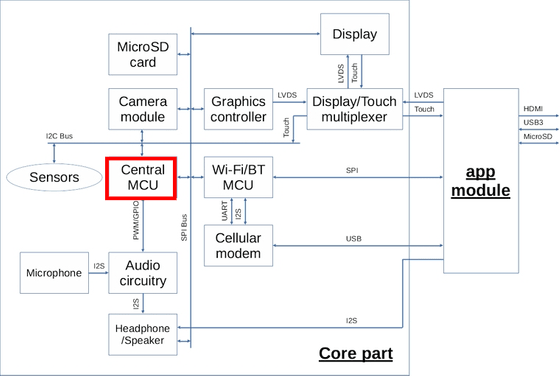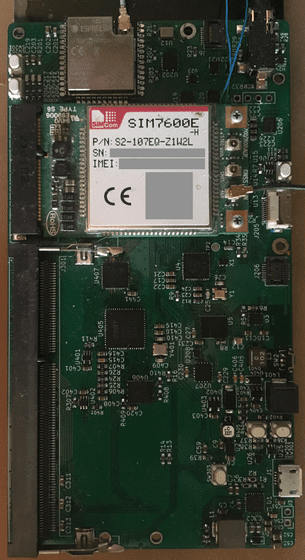'mikroPhone' is an open source project to build your own privacy-focused mobile phone

The source and blueprints of the mobile phone 'mikroPhone', which is designed to be simple and self-buildable using the open source instruction set architecture RISC-V, have been made public.
mikroPhone
Many of the smartphones used by modern people are manufactured by major companies such as Apple and Google, and most ordinary people cannot understand how they work or how they work, and it is difficult for them to understand where their user data is going.
This is especially important for investigative journalists, human rights activists, and others who need secure communications. In the past, it was reported that the smartphone surveillance software 'Pegasus' created by the Israeli company NSO Group was being used to monitor the smartphones of journalists around the world.
Smartphone surveillance software 'Pegasus' may have been used to monitor more than 180 journalists in 20 countries - GIGAZINE

The mikroPhone project aims to overcome these security threats and create a mobile phone that protects users and their privacy as much as possible. The mikroPhone project was made possible through funding from NGI0 Entrust, a foundation established by the non-profit organization NLnet , which receives financial support from the European Commission's Next Generation Internet Program.
The conceptual diagram of the mikroPhone is as follows: The core part is basically a mobile phone with a display and a touch screen, and the central microcontroller (central MCU) uses the RISC-V-based microcontroller 'SiFive Freedom E310'.

The only processor that can access the mikroPhone's sensors, microphone, and camera is the RISC-V microcontroller, which reduces the risk of microphone and camera data being stolen remotely.
In addition, all confidential data is encrypted by the MCU before being sent to communication modules such as Wi-Fi and Bluetooth, and communication is performed using the protocol 'EllipticCP' designed for mikroPhone and ensuring anonymity through end-to-end encryption and
Additionally, because hardware is made as open and off-the-shelf as possible, the risk of supply chain attacks, such as malware being introduced during the manufacturing process, is greatly reduced.
At the time of writing, the core hardware design of the mikroPhone has already been completed, and the central MCU OS that supports basic phone functions such as phone calls and SMS messages is almost complete. In addition, although the board is exposed in the photo below, it seems that you can also make a 3D printable phone case designed with FreeCAD.

The drawings and firmware for these boards can be obtained from the following repository:
rvPhone git repository
https://git.majstor.org/
Related Posts:
in Hardware, Smartphone, Security, Posted by log1l_ks







